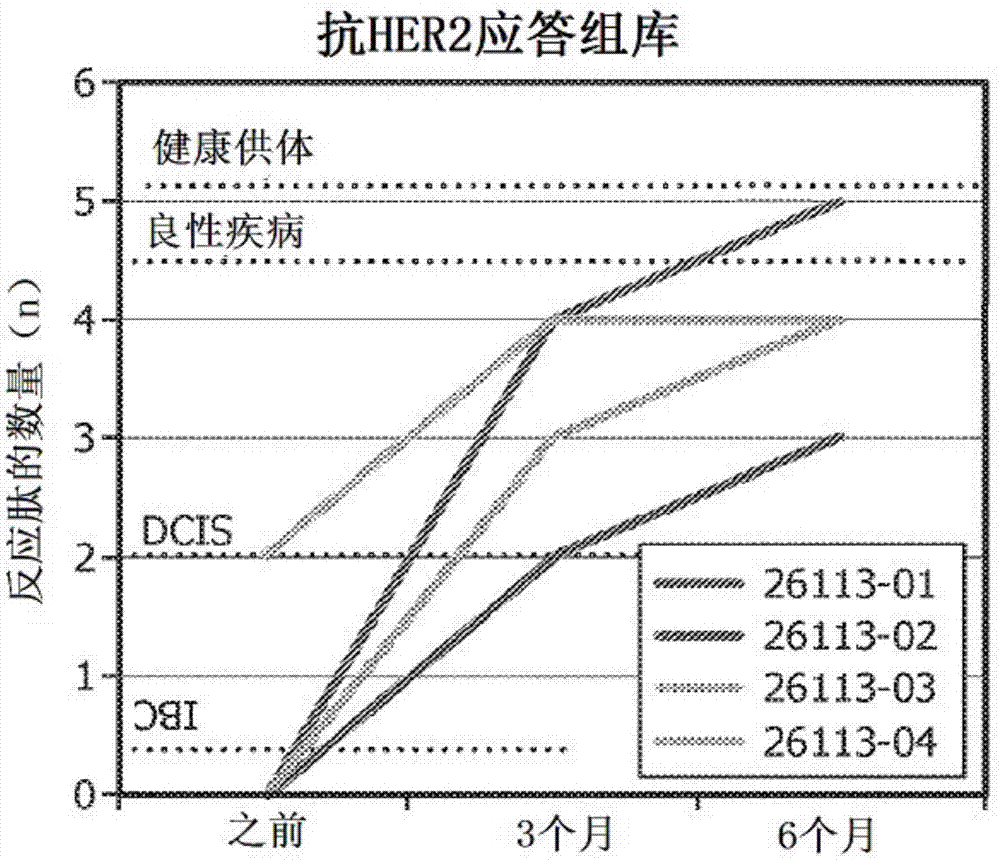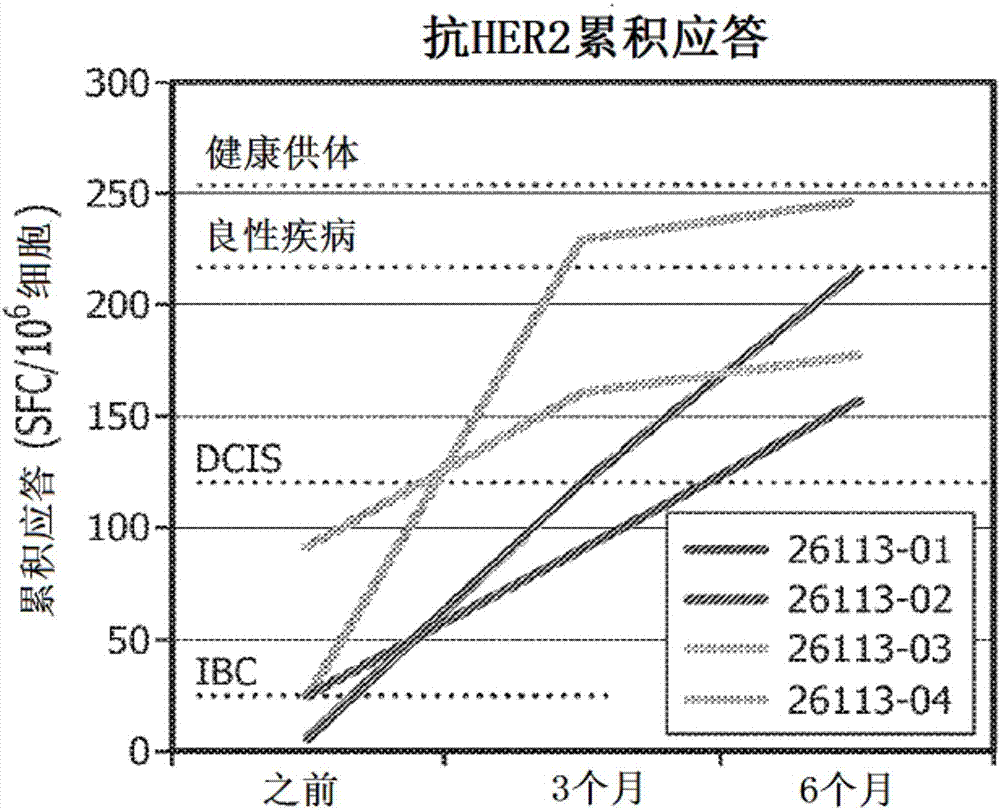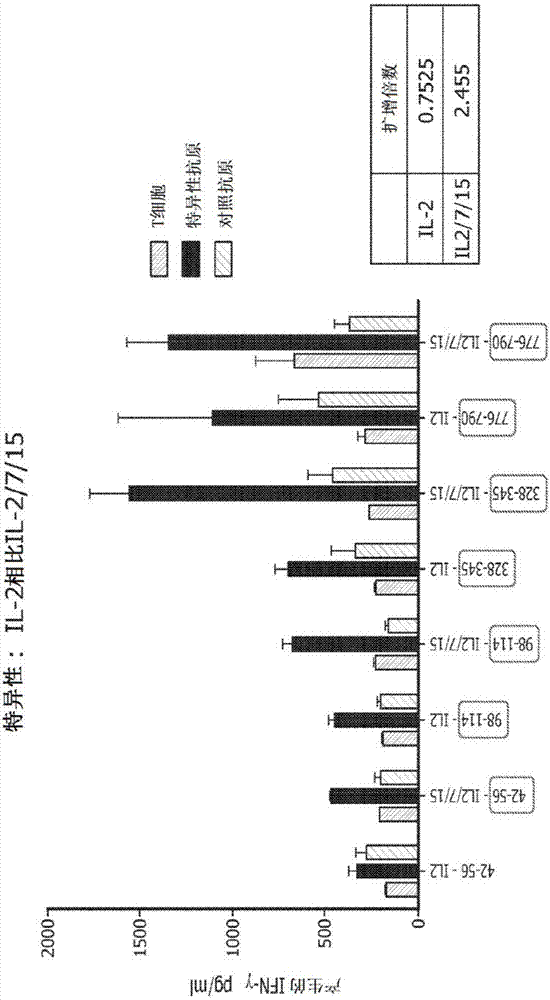In vitro artificial lymph node method for sensitization and expansion of t cells for therapy and epitope mapping
A cell and cell group technology, applied in biochemical equipment and methods, animal cells, antibody medical components, etc., can solve the problems of loss of specific function of cell death antigens, insufficient amplification level, etc.
- Summary
- Abstract
- Description
- Claims
- Application Information
AI Technical Summary
Problems solved by technology
Method used
Image
Examples
Embodiment 1
[0240] Example 1: Anti-HER2CD4 in breast cancer patients inoculated with type I dendritic cells + Restoration of Th1 responses
[0241] The following study was designed to explore the role of helper type 1 polarized dendritic cell ("DC1") seeding.
[0242] Type I dendritic cell vaccination with HER2 with residual disease after neoadjuvant therapy + IBC patients
[0243] Four HER2 patients with residual disease after neoadjuvant therapy + IBC patients receive adjuvant HER2-pulsed type I dendritic cell vaccine. The Th1 immune response of each patient was determined before type I dendritic cell inoculation, 3 months after dendritic cell inoculation and 6 months after inoculation, and from six HER2 II peptides (SEQ ID NO: 1-6 ) pulsed patient PBMC production by measuring IFNγ production by ELISPOT as described above. Autologous type I dendritic cell vaccines were prepared as previously described. (1) overall anti-HER2 response rate (response rate >1 peptide), (2) number ...
Embodiment 2
[0251] In vitro expansion of embodiment 2-HER2-specific Th1 cells
[0252] The following study was designed to interrogate the role of adoptive T cell transfer in restoring anti-HER2Thl immunity. T cell expansion to levels required for adoptive therapy and epitope mapping studies while maintaining antigen specificity and cellular function.
[0253] Briefly, in vitro, HER2-specific Th1 cells were generated by co-culture with HER2 peptide-pulsed type I dendritic cells and expanded using IL-2 alone or IL-2, IL-7, and IL-15 . Th1 cells were subsequently expanded by repeated HER2-peptide pulses of type I dendritic cell co-culture or by anti-CD3 / CD28 stimulation. The expansion factor was defined as: (the number of T cells after expansion / the number of T cells before expansion); the specificity of antigen-specific IIγ production was determined by ELISA.
[0254] As shown in this paper, CD4 + Repeated co-culture of T cells with HER2 peptide pulsed with type I dendritic cells stimu...
PUM
 Login to View More
Login to View More Abstract
Description
Claims
Application Information
 Login to View More
Login to View More - R&D
- Intellectual Property
- Life Sciences
- Materials
- Tech Scout
- Unparalleled Data Quality
- Higher Quality Content
- 60% Fewer Hallucinations
Browse by: Latest US Patents, China's latest patents, Technical Efficacy Thesaurus, Application Domain, Technology Topic, Popular Technical Reports.
© 2025 PatSnap. All rights reserved.Legal|Privacy policy|Modern Slavery Act Transparency Statement|Sitemap|About US| Contact US: help@patsnap.com



